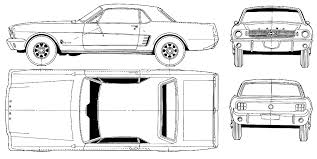2. How do you overcome the difficulties encountered?
Friday, September 24, 2010
Reflection - Prototype
2. How do you overcome the difficulties encountered?
Sunday, July 18, 2010
Ergonomics (Product description and Idea Trigger)

(i) Describe the product.
This product is a natural toothbrush. It is made of wood shaped like a stick. It is brown in colour, with rough texture. The toothbrush is used by brushing your teeth with the edge of it. Then, the edge is cut off to be able to be used again.
(ii) What are the design considerations when designing this product?
(iii) Would an elderly faced difficulty using this product? If yes, what are the difficulties that the elderly would face?
(iv) What do you think can be done to improve on the design of the product to suit the elderly? (Sketch the improved design in your sketchbook and take a picture of it. Post the improved sketch at the end of your post.)

Friday, July 16, 2010
Ergonomics 2

1) Ergonomics is the study of people's efficiency in their working environment.
- comfort
- ease of use
- productivity/performance
- safety
- aesthetics

Wednesday, July 14, 2010
Ergonomics 1
Tuesday, June 29, 2010
Elderly challenge observation 4
Firstly, there are some commuters who are lazy or do not care for other older people. So, they pretend to be asleep or busy with something like reading when the see elderly boarding. This causes the elderly to may not be able to find seats, so they will have to stand. If the bus or train suddenly jerks, they will fall and may injure them severely. So, we all have to be more considerate to elderly and give up our seats to them as they are much weaker and easier to fall.
The government should educate the public more and parents should start cultivating that habit in their children too. This will then ensure that the elderly will have a better time travelling in public transportation.
Sunday, June 27, 2010
Elderly Challenge Observation 3
Sometimes, they forget about it and it ends up overflowing or being burnt.
This can be dangerous for elderly who stay alone as if they fall asleep while the food is cooking, something may happen and cause a fire, which will endanger not only themselves but their neighbours too.
Elderly challenge observation 2
Understanding the elderly challenge
Thursday, June 17, 2010
Elderly challenge observation 1

I have observed that most of the elderly have problems going up and down the steps when they go to markets for grocery shopping or having meals. Some of them bring their own shopping carts withthem to carry groceries, so it is more difficult for them to go down the stairs. Then, the steps may pose a hazard as the elderly may fall down due to their weaker legs. There are stairs in my house, and my grandparents have trouble walking up and down the stairs.


Thursday, March 25, 2010
Personal Reflection (NEWater visit)
2. Name 2 concepts that you have learnt today during the visit.
I learned about how Singapore's water supply is not everlasting if we do not do anything about it and that how foreign particles are separated from water molecules.
3. What is the 1 interesting thing that you have learnt today?
The 1 interesting thing I have learned today is that NEWater has three different methods of cleaning water to make sure that no or very few bacteria, viruses or foreign particles are left in the water.
4. What are the things that you can do to help with water conservation in Singapore?
Tuesday, March 9, 2010
Personal Reflection(9th March)
2. Name 2 concepts that you have learnt today pertaining to design and describe why is it important in design?
I learned that we should always come up with a few sketches and designs before we start making a certain thing to reduce mistakes. We must also make sure that it is a design which will work and be useful.
3. What is the 1 interesting thing that you have learnt today?
Monday, February 15, 2010
Write up on previous post
Friday, February 5, 2010
The different types of photography are sports photography, underwater photography, landscape photography, animal photography, aerial photography, architecture photography, advertising photography, documentary photography etc.
Source: http://www.shotaddict.com/wordpress/2006/10/18/1382.html
The main types of equipments for photography are the camera, tripod, lens, flashes and camera cases. Source:http://photography.about.com/od/photographyequipment/Photography_Equipment.htm
Aperture is a hole which allows us to focus on the image, and determines the sharpness of the image. It also controls the speed of the shutter. Source:http://en.wikipedia.org/wiki/Aperture
The focus is for adjusting the clearness of the objects taken in the picture.
Shutter speed is the time used to take a picture. It can halve or double the amount of light the picture has. Source:http://en.wikipedia.org/wiki/Shutter_speed
ISO speed controls the fineness and number of pixels in the picture taken.
Source: My Father
In photography, metering mode determines the exposure of the items in the picture. Source: http://en.wikipedia.org/wiki/Metering_mode
The white balance in photography is for getting the colours of the images to be as clear as possible.
Composition of photography is the most important item in photography. It is for increasing the expressiveness of the picture.
Thursday, January 21, 2010
 Isometric drawing is using the thing you are drawing's exact length and size to draw the picture of it.Image URL:iso3.gif
Isometric drawing is using the thing you are drawing's exact length and size to draw the picture of it.Image URL:iso3.gif smaller.
smaller....... URL:http://library.thinkq
 uest.org/TQ0310106/oblique.html
uest.org/TQ0310106/oblique.html


